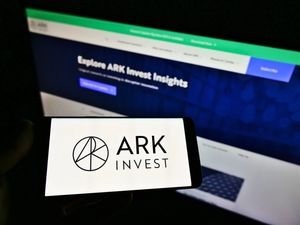
Global advertising conglomerate Interpublic Group (NYSE: IPG) met Wall Street’s revenue expectations in Q1 CY2025, but sales fell by 8.5% year on year to $2 billion. Its non-GAAP profit of $0.33 per share was 27.2% above analysts’ consensus estimates.
Is now the time to buy IPG? Find out in our full research report (it’s free).
Interpublic Group (IPG) Q1 CY2025 Highlights:
- Revenue: $2 billion vs analyst estimates of $1.99 billion (8.5% year-on-year decline, in line)
- Adjusted EPS: $0.33 vs analyst estimates of $0.26 (27.2% beat)
- Adjusted EBITDA: $225.7 million vs analyst estimates of $182.2 million (11.3% margin, 23.9% beat)
- Operating Margin: -2.1%, down from 8.4% in the same quarter last year
- Free Cash Flow was -$58.5 million compared to -$192.5 million in the same quarter last year
- Organic Revenue fell 3.6% year on year (1.3% in the same quarter last year)
- Market Capitalization: $9.29 billion
StockStory’s Take
Interpublic Group’s first quarter results reflected a challenging start to the year, shaped by the lingering impact of major client losses and ongoing restructuring efforts. CEO Philippe Krakowsky pointed to a 3.6% organic revenue decline as “consistent with the outlook and phasing we shared earlier this year,” with account losses in the U.S., Europe, and Asia Pacific driving much of the headwind. However, areas such as IPG Mediabrands and segments in Latin America delivered growth, helping to offset some of the pressure from departing clients.
Looking ahead, management reaffirmed its commitment to transformation and cost-reduction initiatives, noting that “the benefits of these increased structural cost savings should accrue to the newly merged entity in 2026 and beyond” following the planned Omnicom acquisition. The team highlighted continued uncertainty in the macroeconomic environment, with Chief Financial Officer Ellen Johnson emphasizing that the company remains “well-positioned both financially and commercially” despite ongoing volatility and structural changes.
Key Insights from Management’s Remarks
Interpublic Group’s management focused on the dual impact of major account losses and accelerated restructuring as the main themes for the quarter, while also emphasizing progress in media and technology-driven capabilities.
- Account Losses Drive Decline: The majority of revenue pressure stemmed from three significant client losses, which affected multiple regions and business lines, particularly in integrated advertising and creativity-led solutions.
- Media and Data Segments Resilient: IPG Mediabrands and Acxiom posted growth, supported by new business wins and renewed client contracts in sectors like telecom, consumer packaged goods, and financial services.
- Restructuring Program Expansion: The company expanded its cost-reduction program, targeting $300-$350 million in annualized expense savings with increased centralization, offshoring, and technology investments. Management expects most of these savings to materialize in 2026 and beyond.
- AI and Platform Investments: New initiatives included the appointment of a global head of AI commerce and the rollout of AI Console, an internal tool designed to drive productivity across client services, media planning, and content creation.
- Omnicom Merger Progress: The planned combination with Omnicom moved forward, clearing regulatory hurdles in multiple jurisdictions. Management reported no material client conflicts or impacts on business activity due to the pending merger at this stage.
Drivers of Future Performance
Management’s outlook for the remainder of the year centers on navigating continued client turnover, accelerating restructuring, and leveraging technology investments to stabilize revenue and margins.
- Transformation and Cost Savings: Ongoing restructuring efforts, including greater centralization and automation, are expected to yield substantial expense reductions, particularly as benefits ramp up in 2026 for the combined entity post-merger.
- Client Mix and Market Volatility: The company is closely monitoring macroeconomic uncertainty and evolving client spending patterns, with management emphasizing the need to remain agile amid shifting marketing budgets and sector-specific impacts.
- AI-Driven Service Expansion: Further integration of artificial intelligence into both internal operations and client-facing solutions is viewed as a key lever for improving efficiency and enhancing the value proposition to marketers.
Top Analyst Questions
- David Karnovsky (JPMorgan): Asked about shifts in client marketing spend and media allocation. Management responded that “the media market has been steady thus far into April,” with no significant changes in channel preferences.
- Jason Bazinet (Citi): Inquired about unusually low working capital use. CFO Ellen Johnson attributed it to volatility in payment timing, noting no structural changes in working capital management.
- Cameron McVeigh (Morgan Stanley): Questioned the pricing environment and potential client conflicts from the Omnicom merger. Management indicated pricing trends remain stable and reported no observed client conflicts to date.
- Michael Nathanson (MoffettNathanson): Asked about new business activity amid the merger. CEO Krakowsky noted new business remains “mid-range,” with clients generally awaiting further clarity but no dramatic shifts in behavior.
- Daniel Otsley (Wells Fargo): Sought detail on the margin impact and timing of restructuring benefits. Management clarified that while some savings will be realized this year, the full benefit is expected in 2026 and beyond.
Catalysts in Upcoming Quarters
Looking forward, the StockStory team will be watching (1) the pace and effectiveness of ongoing restructuring initiatives, (2) indications of underlying client retention or further account turnover, and (3) the regulatory progress and eventual integration with Omnicom. Additional signposts include measurable impacts from AI-driven service adoption and stabilization or growth in key segments like media and data solutions.
Interpublic Group currently trades at a forward P/E ratio of 9.3×. At this valuation, is it a buy or sell post earnings? The answer lies in our free research report.
Stocks That Overcame Trump’s 2018 Tariffs
Market indices reached historic highs following Donald Trump’s presidential victory in November 2024, but the outlook for 2025 is clouded by new trade policies that could impact business confidence and growth.
While this has caused many investors to adopt a "fearful" wait-and-see approach, we’re leaning into our best ideas that can grow regardless of the political or macroeconomic climate. Take advantage of Mr. Market by checking out our Top 9 Market-Beating Stocks. This is a curated list of our High Quality stocks that have generated a market-beating return of 176% over the last five years.
Stocks that made our list in 2020 include now familiar names such as Nvidia (+1,545% between March 2020 and March 2025) as well as under-the-radar businesses like the once-small-cap company Exlservice (+354% five-year return). Find your next big winner with StockStory today.







